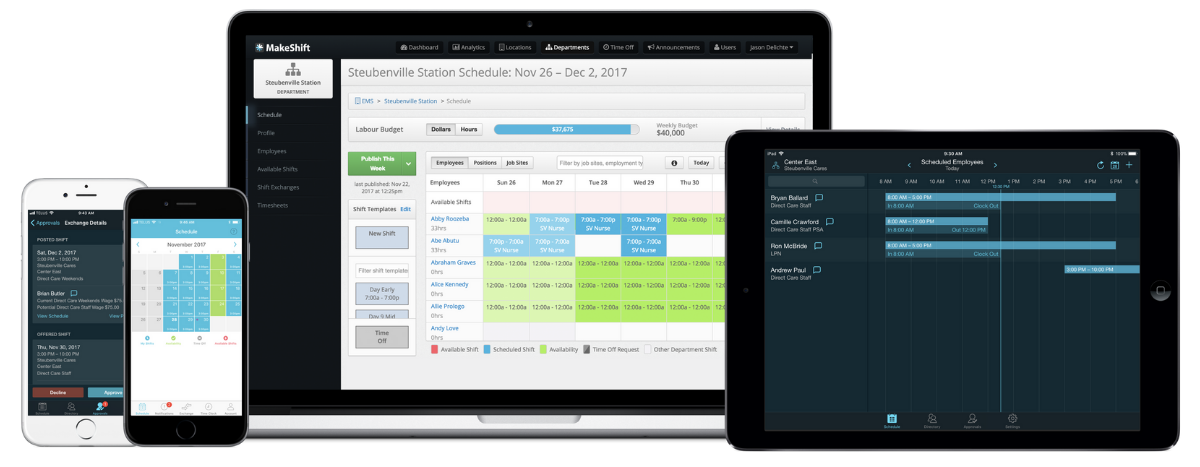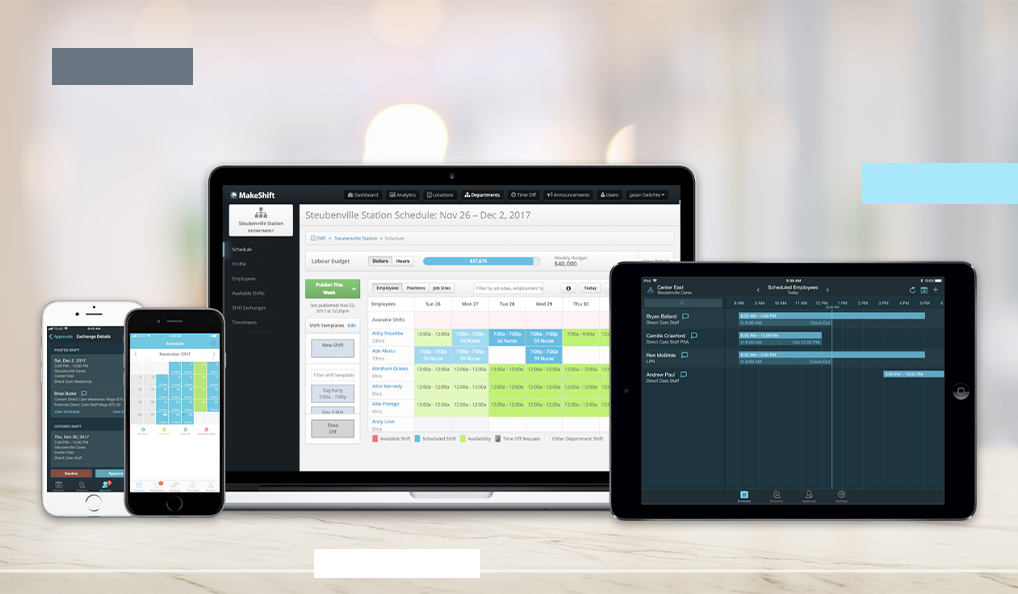The concept of self-scheduling is gaining traction as a solution to enhance employee experience and offer more work-life balance.
But before we go any further, let’s address some concerns about self-scheduling…
- “Our shift schedules are too complex.”
- “How can we ensure some amount of fairness?”
- “Self-scheduling will kill our team collaboration.”
- “We’re not tech savvy at our small business.”
- “How do we satisfy our employee preferences AND business needs?”
These are all valid concerns.
However, once we address the hows and whys of implementing self-scheduling, we’ll bet you’ll see how it can benefit your organization.
From streamlining scheduling complexities to bolstering team collaboration, we'll explore the factors that shape successful self-scheduling.
And you’ll learn why it might be the missing piece to a more engaged and harmonious workforce.
- What is Employee Self-Scheduling?
- How Self-Scheduling Can Work for Different Industries
- How Does Self-Scheduling Work?
- Scheduling Challenges Solved With Self-Scheduling
- How To Create A Self-Scheduling Policy
- How MakeShift Makes Employee Self-Scheduling A Breeze
- Self-Scheduling FAQs
- Self-scheduling: The Way to a Cohesive Company Culture
What is Employee Self-Scheduling?
Staff self-scheduling means employees get to choose their work shifts based on availability and preferences.
Instead of shouldering all shift planning and schedule creation yourself, you give your employees the option to pick shifts that best suit their personal needs.
This system enhances employee experience, improves work-life balance, and streamlines your scheduling process. It also addresses the shift in many employees’ post-Covid priorities.
According to Gartner, 65% of employees say the pandemic made them rethink the place work should have in their lives. Prioritizing work-life balance will go a long way with your employees.

How Self-Scheduling Can Work for Different Industries
Employee self-scheduling can help alleviate scheduling woes in many different industries. It can benefit industries like education, transportation, call centers, restaurants & hospitality…etc.
To give you a better idea, we’ve picked 4 industries to illustrate how self-scheduling can target industry-specific needs.
1. Healthcare
In the healthcare industry, self-scheduling can address the unique needs of 24/7 operations, accommodate diverse shift preferences, and contribute to workforce well-being by preventing overwork.
Here are 2 healthcare-specific areas that self-scheduling helps:
- Variable Shift Preferences and Specialization:
Healthcare facilities operate around the clock, requiring a mix of day, evening, night, and weekend shifts. Staff members usually have individual shift preferences.
Self-scheduling allows workers to choose shifts that align with their preferences and availability.
Healthcare staff often have different specializations or areas of expertise. Self-scheduling allows those with specialized skills to choose shifts that match their expertise, ensuring that critical roles are adequately staffed.
- Balancing Workload and Avoiding Burnout:
Healthcare is demanding, and employee burnout is a significant concern. Self-scheduling allows healthcare workers to manage their workload and balance their hours to avoid burnout.
Employees can control the number of shifts they take in a given period, ensuring they don't exhaust themselves. This control over their schedule lets them prioritize self-care and maintain their well-being.
Be sure to implement self-scheduling systems that consider patient care requirements, maintain staffing levels, and comply with regulations to ensure high-quality care delivery.
2. Retail
Retail businesses often experience fluctuations in customer demand, making self-scheduling ideal for employees with varying availability or who prefer certain shifts.
Self-scheduling specifically helps with:
- Flexible Staffing to Match Demand:
Retail experiences fluctuating demand due to factors like seasonality, holidays, and special promotions. Self-scheduling enables employees to choose shifts during their preferred peak periods when extra staffing is required.
- Adapting to Part-Time and Student Employees:
The retail industry often employs part-time workers, students, and individuals with a wide range of availability. Self-scheduling accommodates these diverse schedules, making attracting and retaining a flexible workforce easier.
Effective implementation requires clear communication, training, and monitoring to balance business needs and employee preferences.
3. Construction
Self-scheduling lets workers choose shifts matching their skills and availability, optimizing project phases. It increases flexibility and worker satisfaction while ensuring the right expertise is available.
Here are 2 examples of how self-scheduling can help in construction:
- Flexibility and Project Phases:
Construction projects often have varying phases with different requirements for labor. Employees can have the flexibility to choose shifts based on their expertise, availability, and the demands of the project phase.
For example, employees skilled in foundation work can choose shifts during that phase, while those experienced in finishing work can opt for shifts during the final stages.
- Seniority and Preferences:
You could integrate seniority or other performance-based factors into the self-scheduling process. For instance, employees with higher seniority might have priority in selecting shifts but also allow newer employees to choose before a specific deadline.
Implementing employee self-scheduling in the construction industry can enhance flexibility, employee experience, and overall project management. However, it requires careful planning, communication, and adaptation to the unique challenges of construction work.
4. Golf Course Staff
Many golf courses deal with high seasonality and a part-time workforce.
Implementing self-scheduling in the golf industry empowers staff to align their availability with peak playing times and tournaments and ensures optimal course management, enhancing customer satisfaction and event success.
For example, self-scheduling helps with:
- Tee Time Management and Course Demand:
Golf courses experience varying levels of demand throughout the week and at different times of the day, often centered around tee times. Self-scheduling lets golf course staff, like caddies and pro shop attendants, pick shifts based on anticipated peak and off-peak periods, based on their shift preference.
- Event and Tournament Support:
Golf courses frequently host tournaments, events, and outings that require extra staff. Self-scheduling enables event-specific staff allocation, allowing employees to sign up for these event shifts voluntarily. This flexibility ensures that the course is adequately staffed for large gatherings with employees who want the extra work.
Before implementing self-scheduling, make sure you have policies and clear guidelines and expectations for staff choosing their shifts.
How Does Self-Scheduling Work?
Self-scheduling begins with whoever manages the schedule. They choose the shifts they want filled. Depending on the business or industry, they may set specific qualifications or requirements for some shifts.
When the shifts are created, the scheduler alerts the employees.
Employees can hop in and select the shifts they want. They can communicate with each other to trade shifts as desired. Any empty shifts that need to be filled can always be assigned after employees select what they want.
Employees can choose shifts that fit their lives based on:
- Their outside-of-work schedule
- The hours they can physically handle working
- Qualifications
- Overtime considerations
When using automated scheduling software, you can set limits on employees so they don’t regularly work too few shifts or rack up too much overtime.
Scheduling Challenges Solved With Self-Scheduling
In any industry, staff scheduling challenges pop up on both sides — for managers and employees. Here’s how self-scheduling helps both types of challenges:
Challenges for Managers
Scheduling is time-consuming
Creating team schedules can be a complex and time-consuming task, especially when considering factors like employee availability, preferences, time off, and shift rotations.
Solution: Self-scheduling allows you to offload some of this responsibility to employees, reducing the time spent on the process.
Employee satisfaction and retention
Employee satisfaction and retention are crucial for any organization. Traditional scheduling methods may not always consider individual preferences and constraints, leading to employee dissatisfaction.
Solution: Self-scheduling empowers your employees by giving them a say in their schedules. This improves the employee experience and can reduce turnover rates.
Last-minute changes and adjustments
When using traditional scheduling methods, making last-minute changes or accommodating shift swaps can be tricky and lead to disruptions in the workflow.
Solution: Self-scheduling allows employees to manage shift trades or changes themselves, reducing the burden on you to handle these requests.
Fairness and transparency
Employees can perceive traditional scheduling methods as unfair if they believe certain individuals consistently get preferred shifts or days off.
Solution: Self-scheduling can promote transparency and fairness by allowing everyone to choose their preferred shifts.
Challenges for Employees
Work-life balance
Employees often struggle with maintaining a healthy work-life balance. Fixed schedules imposed by managers may not align with employees' commitments or responsibilities.
Solution: Self-scheduling offers the flexibility to accommodate personal needs, leading to improved work-life balance.
In a Skynova study, over 36% of surveyed employees valued their flexible schedule over PTO, and almost half said having a flexible schedule trumps their salary.
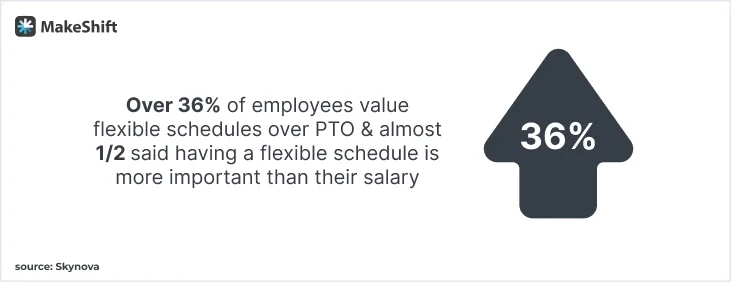
Predictability and consistency
Some employees may have fluctuating schedules or receive their shifts with short notice, making it challenging to plan other aspects of their lives.
Solution: With self-scheduling, employees can have more predictable schedules, enabling them to plan their lives better.
Employee engagement and motivation
Whether or not employees feel empowered and trusted by their employer significantly impacts their engagement and motivation.
Solution: Allowing your employees to self-schedule demonstrates trust and respect, which can positively influence their overall experience and commitment to their work.
Stress and burnout
Employees regularly scheduled for shifts that force them to rearrange their personal lives can significantly affect their mental health.
Solution: According to the Mental Health Foundation, 14.7% of employees struggle with work-related mental health problems.

Choosing preferred shifts and having more control over their schedules can help employees manage stress and prevent burnout. It lets them align their work hours with their peak productivity times or personal preferences, improving overall well-being.
How To Create A Self-Scheduling Policy
You need to strike the right balance to create a staff self-scheduling policy that managers and employees will love and appreciate.
Below are 6 steps you must follow to make self-scheduling work for your business.
1. Assess Operational Needs
Understand the specific operational needs of your organization, including peak periods, minimum staffing levels, and any critical tasks that need coverage at all times.
Identify which roles and departments can benefit from self-scheduling.
Ensure that your self-scheduling policy addresses the organization's staffing needs adequately. Set guidelines to prevent scheduling gaps and manage fluctuations in workforce demand.
2. Ensure clear communication and guidelines
Determine which employees are eligible for self-scheduling based on factors such as:
- Tenure
- Performance
- Training
- Specific job roles
After setting self-scheduling eligibility criteria:
1. Clearly outline the process, deadlines, and expectations. Your employees should understand their responsibility in adhering to the policy.
2. Set clear guidelines and rules for self-scheduling, including:
- How far in advance employees can request shifts
- Blackout periods where self-scheduling is not allowed
- Max number of self-scheduled shifts per week or month
3. Provide ongoing support and resources for employees with questions or who need assistance with the self-scheduling system.
4. Ensure that the self-scheduling policy complies with labor laws and regulations regarding maximum working hours, rest periods, and other relevant provisions.
3. Provide an easy-to-use scheduling platform
Use scheduling software that allows employees to view available shifts and make selections seamlessly.
Keep it user-friendly.
Train staff on how to use the scheduling system.
4. Stay flexible
Allow employees to swap shifts with coworkers, but set reasonable limits to avoid disruptions.
By giving employees control over their schedules while maintaining organizational needs, you'll foster a happier workforce and build a collaborative environment where everyone feels valued and engaged.
5. Ensure fairness
If the demand for certain shifts or days is higher than others, consider implementing a fair rotation system to ensure equal opportunities for all your employees to choose desirable shifts.
Establish a straightforward process for resolving scheduling conflicts or instances where multiple employees request the same shift. Consider using a first-come, first-served approach or a fair rotation mechanism to address conflicts.
6. Monitor and Evaluate
Regularly monitor the self-scheduling system's performance and ask for your team's feedback to identify any improvement areas. Adjust your policy as needed based on the feedback and data.
Regularly gauge employee satisfaction with the self-scheduling policy to ensure it aligns with their needs and preferences.
How MakeShift Makes Employee Self-Scheduling A Breeze
MakeShift goes beyond scheduling — we enhance workforce optimization by streamlining scheduling and encouraging communication.
- Employees can easily set and manage their availability.
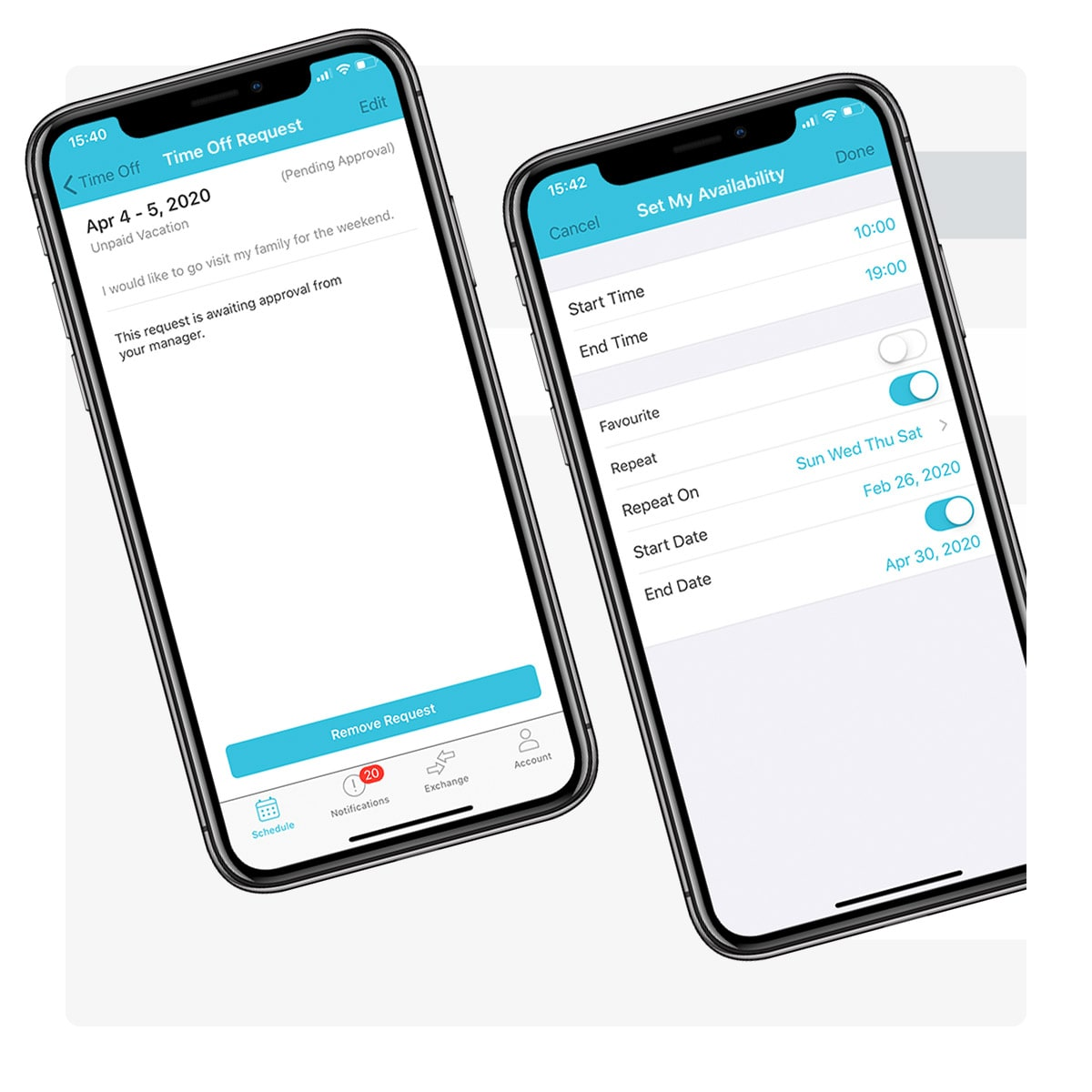
- Employees can swap shifts
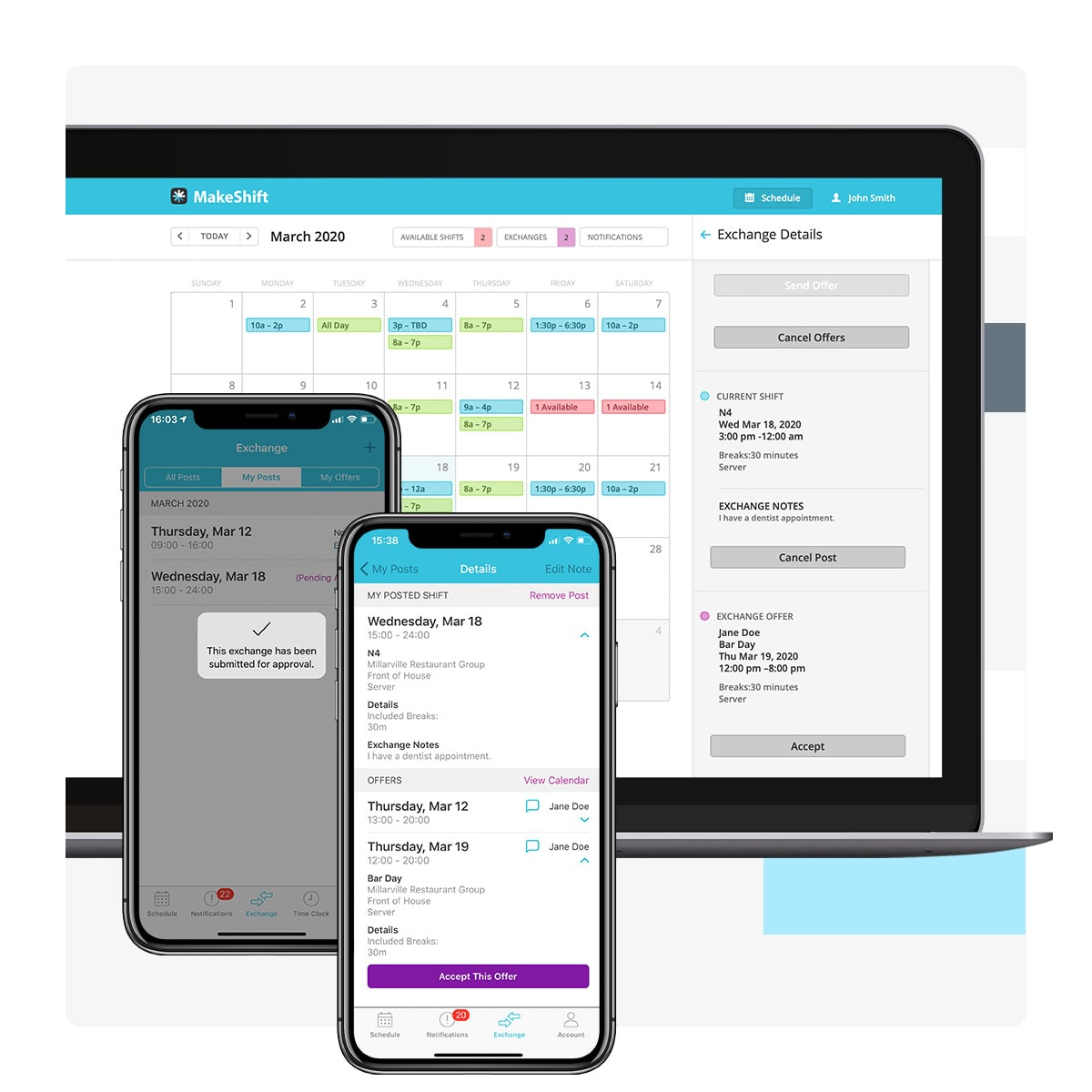
- You can access employee availability when creating schedules
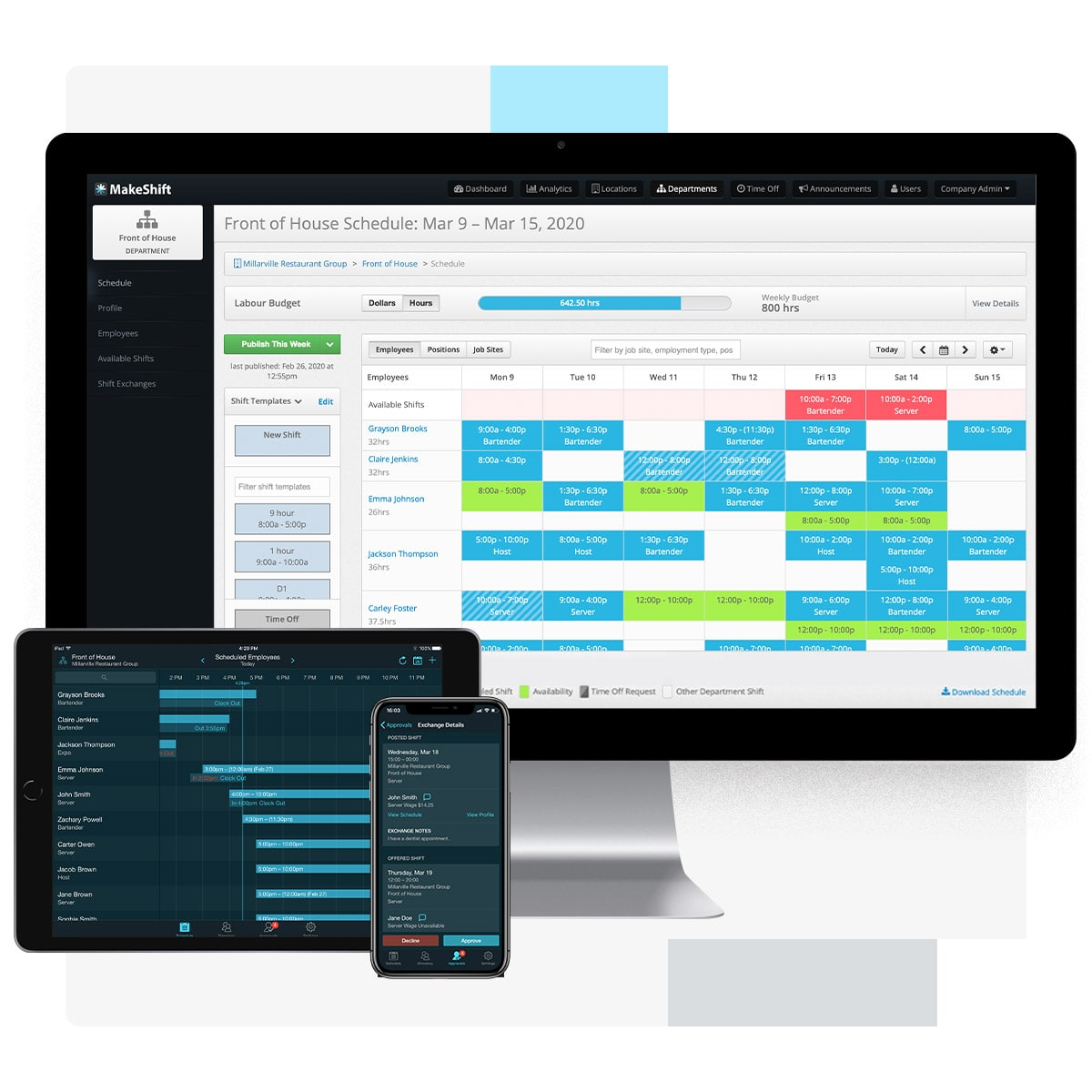
- You can approve shift swaps on the go
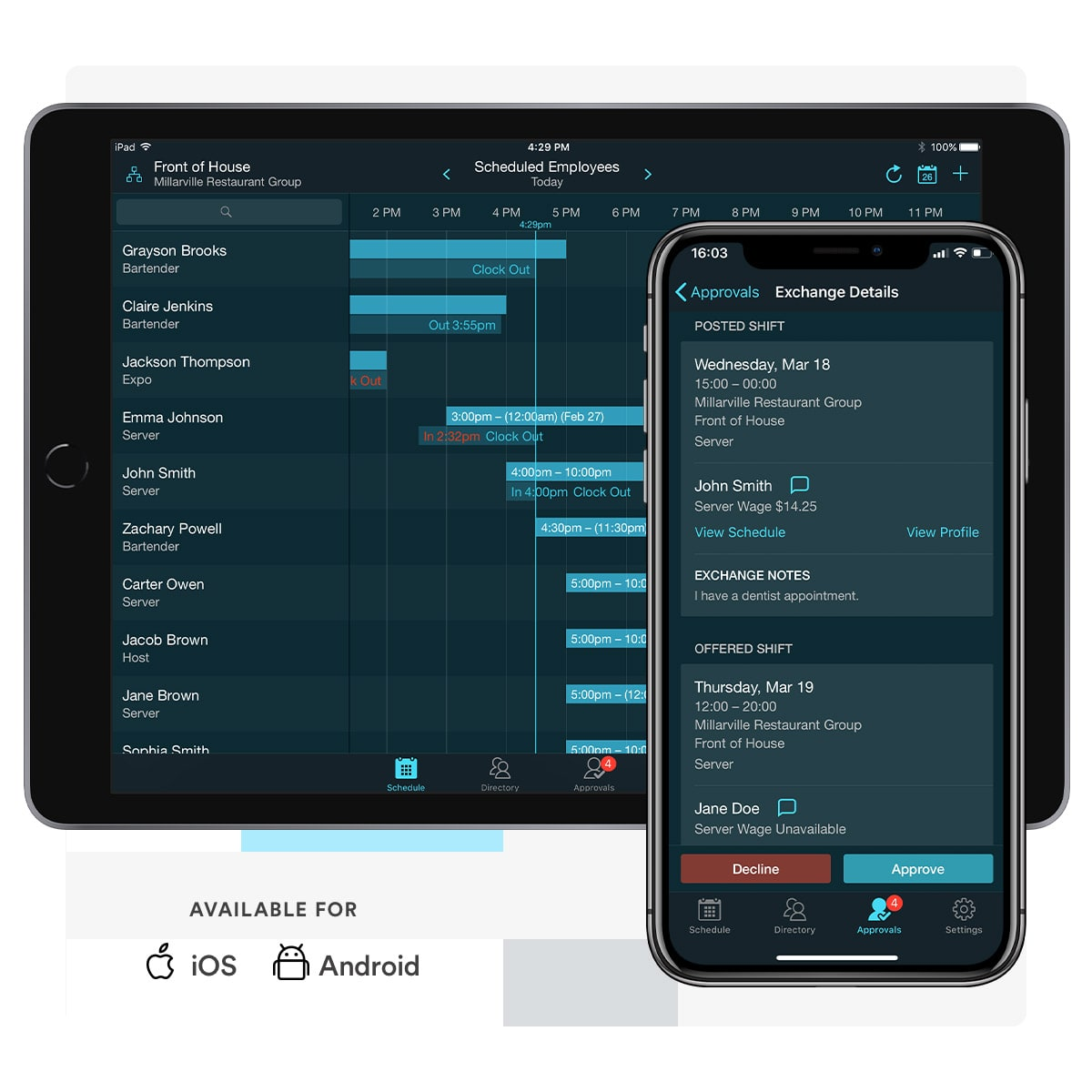
You’ll save time, and your employees will be happier. More say in their scheduling translates to happier, more productive staff that stick around.
Self-Scheduling Frequently Asked Questions
What is self-scheduling?
Self-scheduling allows employees to choose their work shifts based on their availability and preferences.
What is the advantage of self-scheduling?
The advantage of self-scheduling is that it empowers employees to have better work-life balance, increased job satisfaction, and flexibility to align work hours with personal needs
Should employees make their own schedule?
Allowing employees to make their own schedules can enhance job satisfaction, productivity, and overall employee experience. However, it needs proper guidelines to ensure fairness and operational needs.
What's a key consideration for implementing self-scheduling?
Ensure a fair process is in place so everyone gets a shot at choosing preferred shifts and responsibilities are covered.
Self-scheduling: The Way to a Cohesive Company Culture
While the idea of self-scheduling may have you envisioning added chaos and conflict, don’t let your wild imagination keep you from innovation.
When done right, self-scheduling can increase employee morale and productivity and create a harmonious work environment.
Ready to enhance your employee experience and workplace culture through a people-first approach to scheduling? You’re speaking our language — start your free trial of MakeShift today.




